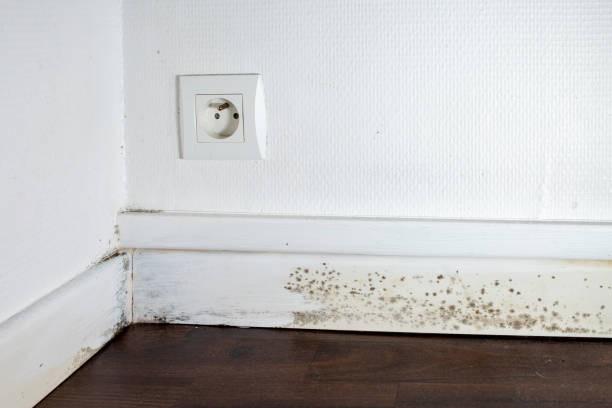
2 minute read
The Effects of Mold on Indoor Air Quality
Indoor air quality plays a crucial role in our overall health and well-being. Unfortunately, one of the significant contributors to poor indoor air quality is mold growth. Mold is a type of fungus that can thrive in damp and humid environments, such as basements, bathrooms, and areas affected by water damage. Understanding the effects of mold on indoor air quality is essential for creating a healthy living environment. Here's a closer look at how mold can impact indoor air quality.
1. Allergens and Irritants: Mold releases tiny spores into the air, which can become airborne and be inhaled by occupants. For individuals who are sensitive or allergic to mold, exposure to mold spores can trigger allergic reactions. Common symptoms include sneezing, coughing, itchy or watery eyes, and congestion. Even for individuals without specific allergies, mold can still act as an irritant and cause respiratory discomfort. The presence of mold in indoor air can significantly impact the comfort and well-being of occupants.
Advertisement
2. Respiratory Issues: Prolonged mold exposure can lead to respiratory issues, particularly in individuals with pre-existing respiratory conditions such as asthma or chronic obstructive pulmonary disease (COPD). Mold spores can irritate the airways, triggering asthma attacks or exacerbating existing respiratory symptoms. In some cases, mold exposure may even contribute to the development of respiratory conditions in otherwise healthy individuals. Maintaining a mold-free environment is crucial for individuals with respiratory issues to prevent the worsening of symptoms and respiratory distress.
3. Fungal Infections: Some types of mold, such as Aspergillus and Stachybotrys (commonly known as black mold), can cause fungal infections in individuals with weakened immune systems. These infections can affect the lungs, sinuses, or other parts of the body. Symptoms may include fever, cough, difficulty breathing, fatigue, and general malaise. Individuals with compromised immune systems, such as those undergoing chemotherapy or with HIV/AIDS, are particularly susceptible to moldrelated infections. Proper mold prevention and remediation are essential to protect the health of vulnerable individuals.
4. Volatile Organic Compounds (VOCs): Mold growth can also lead to the production of volatile organic compounds (VOCs). VOCs are gases emitted by certain molds, which can contribute to indoor air pollution. Exposure to VOCs from mold can cause various health effects, including eye, nose, and throat irritation, headaches, dizziness, and nausea. Prolonged exposure to high levels of VOCs can have more severe health implications and may increase the risk of developing respiratory and other systemic health problems.
5. Odors and Musty Smells: Mold growth often results in a distinct musty odor. This odor can permeate the indoor air and create an unpleasant living environment. Lingering odors can be a sign of hidden mold growth, even if it is not immediately visible. Addressing mold growth and improving indoor air quality can help eliminate these odors and create a fresher and more pleasant living environment.
In conclusion, mold growth can have significant effects on indoor air quality. The presence of mold in indoor spaces can release allergens, irritants, and potentially harmful compounds that can compromise the respiratory health and overall wellbeing of occupants. Regular inspection, prompt remediation of any mold growth, and maintaining proper ventilation and moisture control are key to preventing mold-related issues and preserving a healthy indoor environment. If you suspect mold growth or experience symptoms associated with mold exposure, consult with professionals to assess the situation and take appropriate measures to improve indoor air quality.









